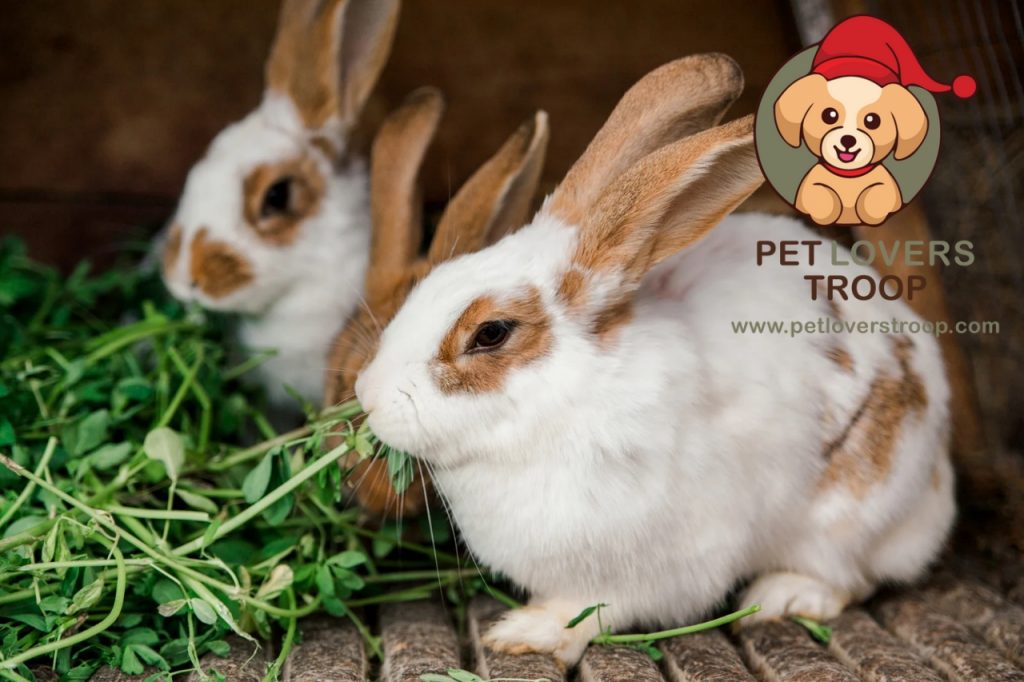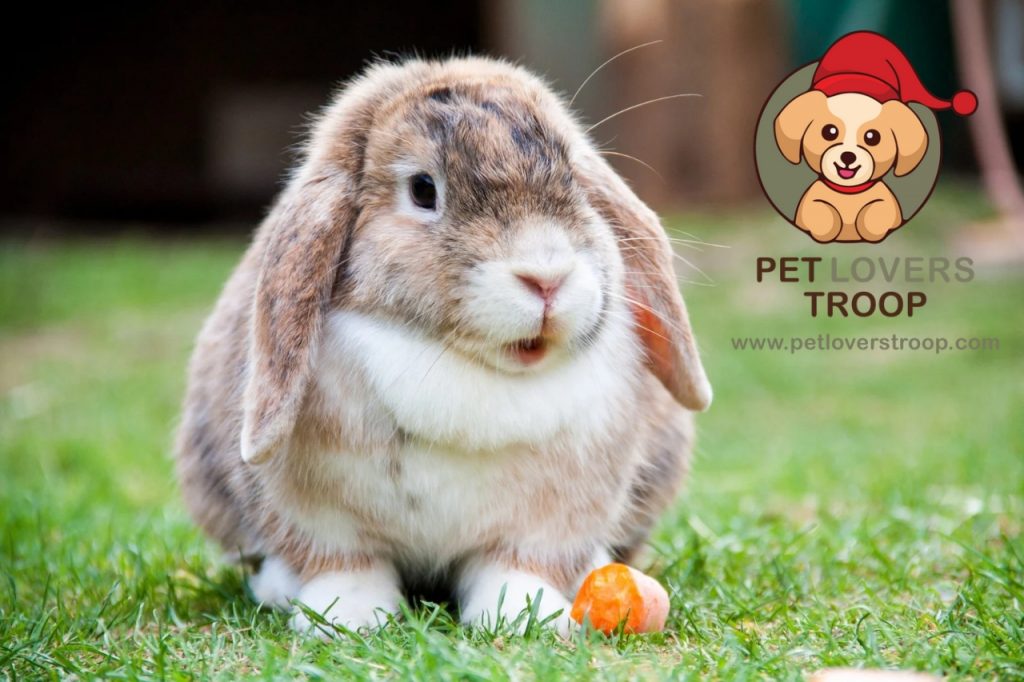As rabbit owners, providing our pets with the best care is a top priority. One health issue that may cause concern is bumblefoot in rabbits, also known as ulcerative pododermatitis. This painful condition affects the feet, causing swelling, irritation, and, in severe cases, infection.
Bumblefoot is common in rabbits living in improper conditions but can be prevented and treated correctly. This blog will explore bumblefoot symptoms and causes in rabbits, present treatment protocols, and explain how owners can prevent this condition.

What is Bumblefoot in Rabbits?
Bumblefoot, or ulcerative pododermatitis in rabbits, causes inflammation that progresses to become infective before generating footpad ulcers. Miserable foot indicates the swollen, sometimes infected appearance of rabbit feet.
Check out: Planning for a Long-Term Commitment: Understanding the Lifespan of a Rabbit
The condition primarily affects rabbits in wire flooring cages but also develops in rabbits that reside on hard or rough surfaces. Failure to treat bumblefoot generates severe foot pain, and rabbits might need surgery when abscesses occur.
What are the Main Causes of Bumblefoot in Rabbits?
Several reasons lead to the development of bumblefoot disease in rabbits. Learning about these risk factors lets you take steps to prevent bumblefoot development.
1. Wire Floors and Hard Surfaces
One of the most common causes of bumblefoot in rabbits is the use of wire floors in rabbit cages. The rough surfaces create friction, which places pressure on delicate footpads and results in pain and eventual infections.
Learn more about: Rabbit Behavior and Socialization: Understanding Your Bunny’s Needs for a Happy Life
The right type of bedding within rabbit cages is essential for protecting rabbit feet from damaging surfaces. The most suitable foot protection for rabbits is soft, absorbent materials, including hay fleece and cotton fabrics.
2. Unsanitary Conditions
The presence of bacteria quickly multiplies when cages stay uncleaned. Bumblefoot tends to develop when bacteria infect feet after they come in contact with urine and faeces.
Your rabbit’s health depends heavily on prompt litter changes because these actions create a sanitary environment that stops foot infections. Using clean bedding reduces moisture on rabbit feet and prevents potential infections from developing because it keeps their feet dry.
Have a look at: French Lop Rabbits 101 – Understanding Their Distinctive Features, Temperament and Personality
3. Role of Obesity in Rabbit Foot Health
The relationship between obesity and rabbit foot health represents a fundamental understanding principle. Additional weight on rabbits leads to a higher bumblefoot risk because the increased pressure damages their feet.
The additional weight from the extra force puts rabbits at risk of developing foot injuries that become infections. The condition of a rabbit’s weight directly relates to their foot health since obesity dramatically enhances bumblefoot risk.
4. Overgrown Nails
A rabbit’s nails, which extend beyond their proper length, will penetrate the footpad surface and generate painful sores that develop into infections easily. Proper foot weight distribution depends on regular nail trimming procedures to prevent unnecessary foot damage. Unmaintained long nails force rabbits to walk differently, thus placing excessive pressure on particular areas of their feet.
Read more on: Caring For Angora Rabbits – How To Build A Comfortable And Supportive Environment For Your Bunny
5. Arthritis and Abnormal Gait
Old Rabbits have arthritis problems that usually cause impaired walking patterns and excessive foot pressure. The affected gait leads to bumblefoot, generating footpad friction irritation and possible injuries. Watching your rabbit’s movements enables early detection of arthritis so you can take steps before the condition becomes more severe.

Signs of Bumblefoot in Rabbits
Proper early detection of signs of foot infections in rabbits can help you to avoid severe medical complications. The main symptoms of foot disease in rabbits are:
- Swelling: Swelling together with redness or inflammation primarily affects the foot pads. Bumblefoot typically begins to show itself through swelling of the feet.
- Discharge or Bleeding: Blood and other discharge forms appear when bumblefoot grows more severe. Foot infection marks itself by this symptom.
- Thickened Skin: Repeated pressure alongside foot irritation leads to skin thickening that produces calluses on the feet. Deformed skin on the feet is an obvious sign that bumblefoot exists.
Check out: Sore Hocks in Rabbits
- Reluctance to Walk: Pain from bumblefoot leads many rabbits to stay immobile and slowly move their feet. Check for proper movement and limping behaviour in your rabbit because delayed movement or limping may require additional investigation.
- Loss of Appetite: The pain experienced by bumblefoot rabbits leads them to avoid food consumption. Your rabbit’s refusal to eat and lethargic behaviour should raise concerns about foot pain from bumblefoot.
Learn more about: Keeping Rabbits Indoors or Outdoors: Evaluating the Pros and Cons of Rabbit Houses
Diagnosing Bumblefoot in Rabbits
Whenever you detect these symptoms, you must obtain a veterinarian consultation. Veterinary examination focuses extensively on the rabbit’s feet to diagnose bumblefoot.
The vet may conduct bacterial cultures or X-ray tests to establish whether bumblefoot affects bones or joints. Deep tissue infections and abscesses require the vet to perform a visual inspection.
How to Treat Bumblefoot in Rabbits?
Medical intervention for bumblefoot differs according to the extent of the infection. Basic medical care is sufficient for treating rabbit foot at early stages, but severe cases will require veterinary professional intervention. Here’s how you can treat bumblefoot at home and through veterinary care:
1. Antibiotics and Pain Relief
Bumblefoot infections in the rabbit’s feet require veterinary medicine with prescribed antibiotics for bacterial treatment. Professionals must drain pus from severe bumblefoot cases through more vigorous medication administration.
Several pain medication options should accompany bumblefoot treatment since this foot condition causes significant pain to rabbits. Anti-inflammatory drugs are effective treatments for bumblefoot because they minimize pain and swelling.
2. Wound Care and Dressing
It is necessary to clean rabbits’ open sores prior to putting on protective dressings following a veterinary prescription. The vet will prescribe antiseptic solutions to clean the wound because they kill dirt and bacteria. In severe situations, the veterinarian will prescribe a bandage for wound protection and healing.
Check out: Understanding Gastric Stasis in rabbits. How to treat a sick rabbit at home?
3. Proper Bedding for Rabbit Cages
Proper bedding in rabbit cages aids bumblefoot prevention and treatment. Fleece or hay lining the rabbit cage serves as gentle foot support and pressure redistribution material. Caring bedding also absorbs moisture to dry your rabbit’s feet, decreasing their infection risk.
4. Diet and Weight Management
Your vet will suggest dietary modifications when your rabbit needs weight reduction because it suffers from being overweight. A reduced rabbit weight will distribute less weight onto its feet to prevent bumblefoot formation while protecting its feet.
Read more: The Science Behind Cat Meowing: What Your Feline Friend Is Trying to Tell You
5. Veterinary Care for Rabbit Pododermatitis
A professional veterinarian must treat severe and persistent cases of bumblefoot that do not respond to at-home care for rabbit pododermatitis. Your rabbit will receive advanced medical treatment at the clinic because the veterinarian might perform abscess drainage and surgery in addition to using strong medications or delivering injections. Prompt medical action stops the development of lasting tissue harm.

How To Prevent Bumblefoot in Rabbits
Prevention is always better than treatment, and there are several steps you can take to keep your rabbit’s feet healthy and avoid bumblefoot:
1. Use Soft Bedding
Use soft bedding in your rabbit cages to ensure your rabbit has good foot support. Smooth materials such as hay fleece and straw serve as padding for rabbit feet to prevent the formation of foot afflictions.
Learn more about: Pet-Friendly DIY Projects: Creating Customized Accessories for Your Pets
The use of wire flooring along with hard surfaces must be avoided because they lead to foot pad injuries. Selecting suitable bedding is the most effective and straightforward approach among all bumblefoot prevention measures.
2. Maintain a Clean Environment
Daily cleaning of your rabbit habitat reduces the risk of dangerous bacterial growth. Irritating infections develop when you overlook frequent replacements of dirty bedding materials.
A dry and clean rabbit cage minimizes rabbits’ probability of developing foot infections. Your rabbit’s health depends significantly on living in a clean environment that provides comfort and proper well-being.
Learn more: The Benefits of Pet Insurance: Is It Worth It?
3. Regular Nail Trimming
Regular nail trims for rabbits will help avoid pressure on their feet. Contact your veterinarian for instructions about rabbit nail trimming since you feel uncertain about the process.
Too-long nails produce bumblefoot because they distribute improper weight on rabbit feet. Rabbits achieve ideal foot health when their nails stay at appropriate lengths.
4. Monitor Weight and Exercise
The condition of rabbit feet strongly depends on their obesity levels. The additional weight carried by obese rabbits produces too much pressure on their feet, thus increasing the risk of developing bumblefoot.
A balanced diet and regular exercise should be available to your rabbit because both elements help maintain proper weight. Regular movement activities stop your rabbit from being too sedentary while protecting them from medical problems caused by inactive behaviour.
Read more: Decoding Cat Tail Signs: What Your Feline Friend’s Tail Is Telling You – January 2025
5. Regular Vet Check-ups
Before they worsen, you should visit a veterinarian regularly to help detect health concerns in advance, such as bumblefoot. During routine vet appointments, watch your rabbit’s foot health so your vet can provide recommendations before the problem advances. Scheduling routine appointments allows proactive medical intervention that results in long-term rabbit health preservation.
Conclusion
Proper care can easily prevent bumblefoot in rabbits, which causes intense suffering. A combination of proper bedding for rabbit cages, environmental cleanliness, and weight control will diminish the probability of bumblefoot.
The health of your rabbit’s feet stays good when you routinely cut their nails and check their foot status. Rabbit pododermatitis requires swift veterinary treatment for signs of foot infections to avoid developing severe discomfort that may result in abscesses. Your rabbit can live a long, healthy existence when you give it proper care and monitoring despite avoiding bumblefoot pain.
Frequently Asked Questions (FAQs)
1. How long does it take for a rabbit to recover from bumblefoot?
The recovery time for bumblefoot in rabbits depends on the severity of the infection. When symptoms are mild, bumblefoot heals a few weeks after proper care, but severe infections become treatment cases over multiple months. The recovery time becomes more rapid when treatment occurs at an early stage of the condition.
2. Can bumblefoot be treated at home, or does it require a vet?
Treating mild bumblefoot cases often begins with home care, which involves using soft bedding materials and consistently cleaning the damaged tissue. However, professional veterinary care becomes essential for proper treatment and recovery when an infection exists alongside abscesses or significant swelling.
3. Is there a specific breed of rabbit more prone to bumblefoot?
No, any rabbit breed can develop bumblefoot without a predetermined association. The appearance of bumblefoot depends on obesity, inadequate bedding materials, and poorly designed enclosures, and all rabbit breeds are susceptible to this disease.
